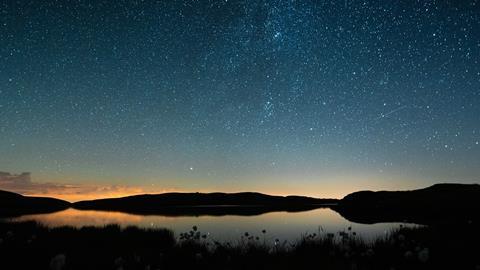Space is a hostile environment due to a range of factors such as radiation, microgravity, and extreme temperatures. Luckily for us, the Earth is in the ‘Goldilocks Zone’ where everything is just right, we are far enough away from the sun to have ideal surface temperatures for liquid water to support life and our atmosphere protects us from radiation and traps heat.
Throughout history, humans have been curious about space, whether that be Galileo and his theories of the planets or the moon landing in 1969. Recently this curiosity and innovation has reached new levels with the first commercial space walk being completed with new slimmed-down space suits.
With advancements in both the private and public space sectors, there are many challenges still needing to be overcome if there is going to be exploration into deep space and potentially one-day habitats for humans to live in on the Moon or Mars.
A way that NASA is trying to further advancements in space habitats is through a research project into whether future habitats on the Moon or Mars could be made of fungi. The typical way we build habitats on Earth out of bricks, wood, and metal, would come at a huge energy cost if we had to bring all those resources to the Moon or Mars or mine the resources in space. Instead, a compact habitat made out of lightweight material with dormant fungi can be carried by human explorers and when they want to set up a base they can just add water, and the mycelium of the fungi will grow around the structure. This would allow for a functional human habitat to be built on Mars wherever the individual may choose.
Whilst these structures sound very simple, they would in fact be intricate structures to form a three-layered dome. The outermost layer would be made from ice that would protect the home from radiation and also feed the second layer which would be made from cyanobacteria which would photosynthesis and produce oxygen for humans and nutrients for the mycelial layer.
With an increase in humans going into space and potentially one day setting up places to live on Mars, there is a need for items such as probiotics to treat gastrointestinal or metabolic diseases in space and microorganisms to aid in crop production. A recent study was conducted to identify any materials that could be used to keep the microorganisms stable and still viable on the journey to space and in extreme conditions. They identified that a bacterium that can be used to treat traveller’s diarrhoea remained functional in the new storage conditions even after being exposed to high temperatures and pressure as well as ionising radiation.
As well as providing some benefits, microbes can also be a nuisance when in space. In 1988 on the Russian space station, Mir, fungi were observed on the windows, control panels, and air conditioners. These fungi slowly ate away at the interior of the space station and proved difficult to remove.
There was recently a study suggesting a novel way in which to stop the spread of spores from growing on future space stations. Researchers found that with increased humidity in space stations, which is expected with astronauts constantly exhaling moisture, microorganisms such as fungi can grow rapidly. Increased humidity can also cause a change in the composition of dust which can also make it a suitable environment for microbes like fungi to succeed. To combat this on space stations such as the ISS (International Space Station) dust levels have to be monitored, and astronauts have to clean the screens that cover the filters for the air ventilation in the space station.
Concerningly, a species of bacteria, Enterobacter bugandensis, which is known to be multidrug resistant was isolated from the ISS. Under the stress that the bacteria encountered on the ISS, mutations occurred in the bacterial genome which resulted in the bacteria becoming functionally and genetically distinct from E. bugandensis that were isolated on Earth. Highlighting how the variable conditions of space can mutate microbes and the importance of cleaning practices for humans.
With the ever-increasing travel and research into space, microorganisms have proved themselves to be both friend and foe.








No comments yet